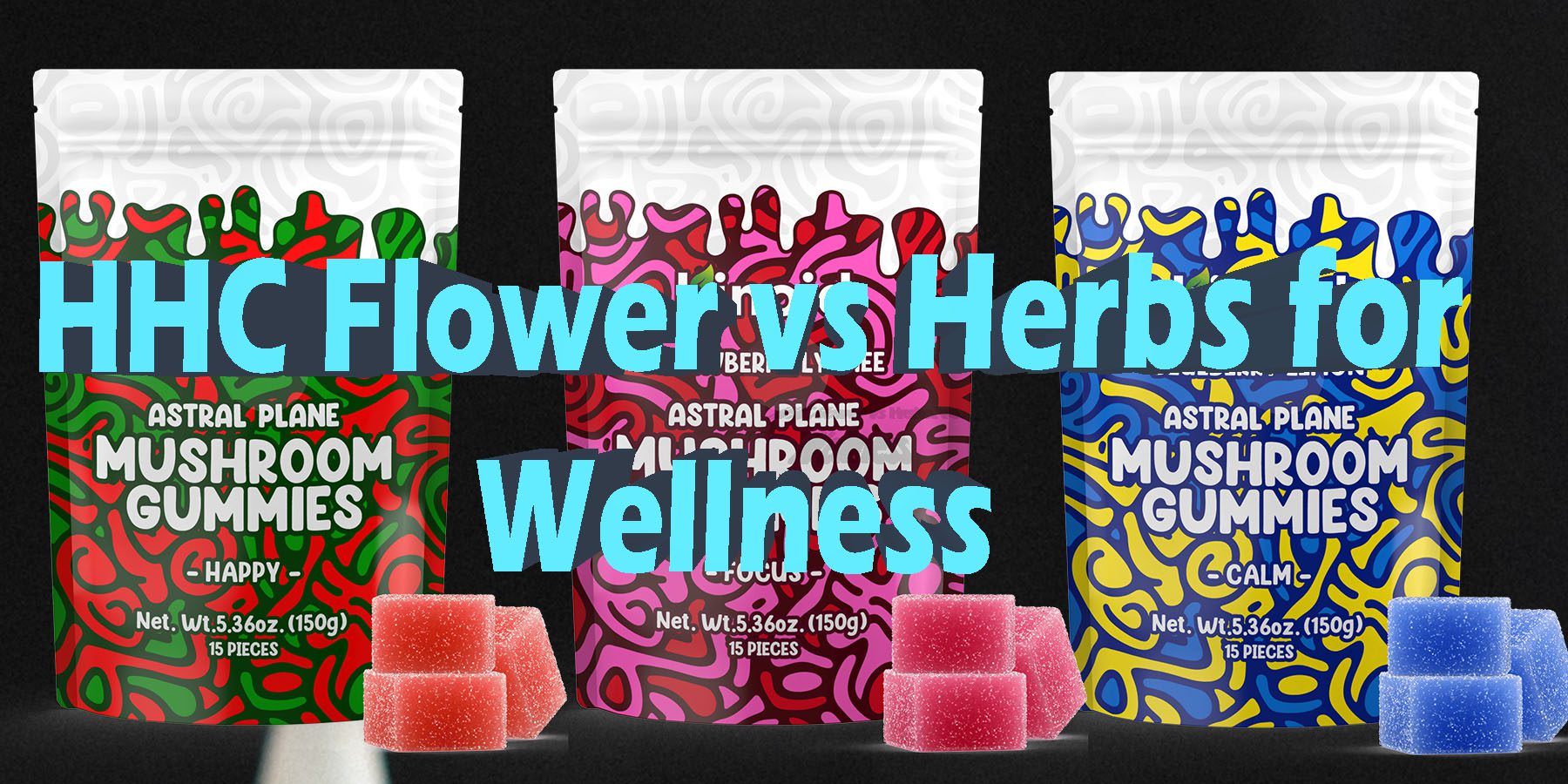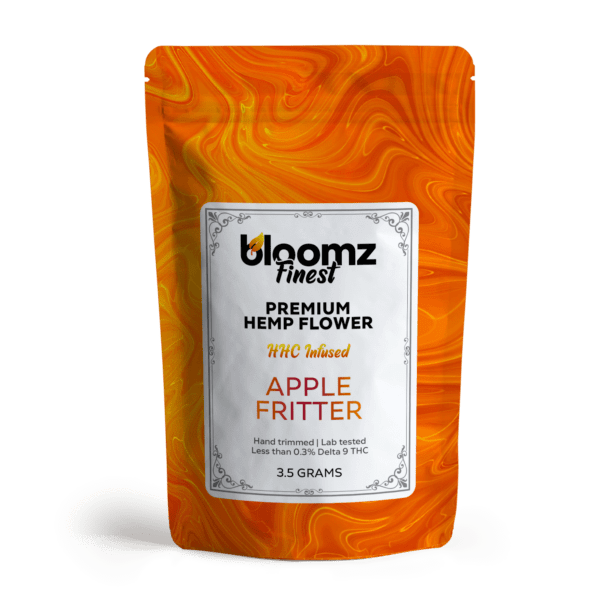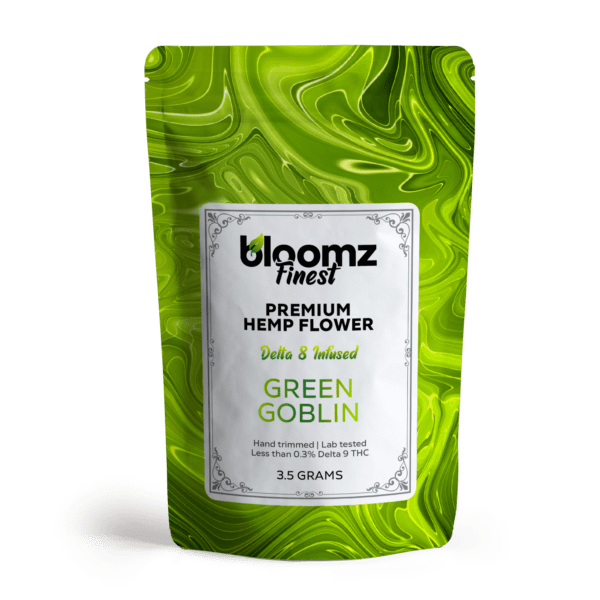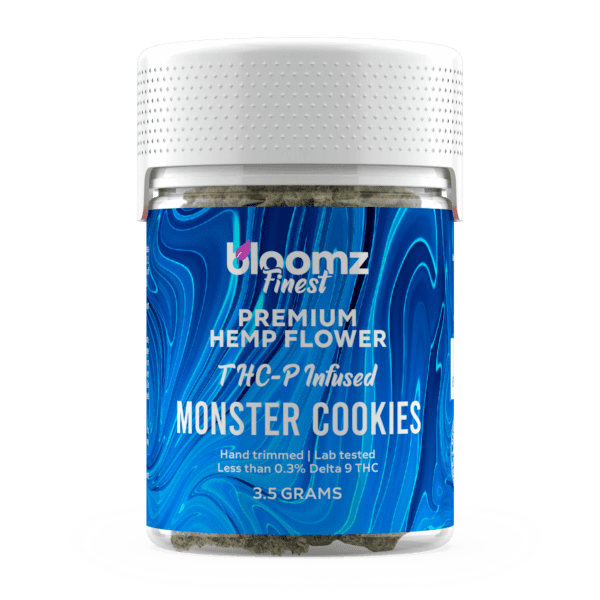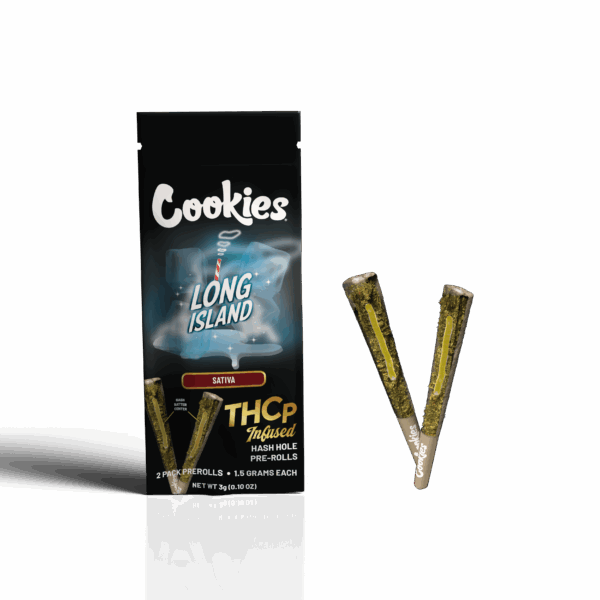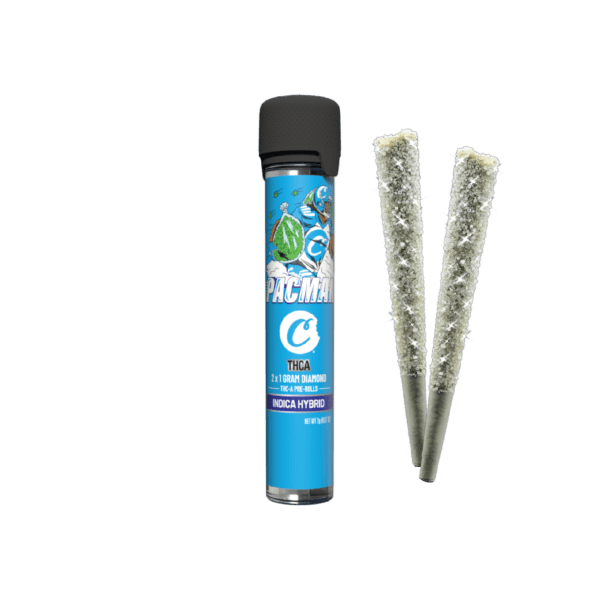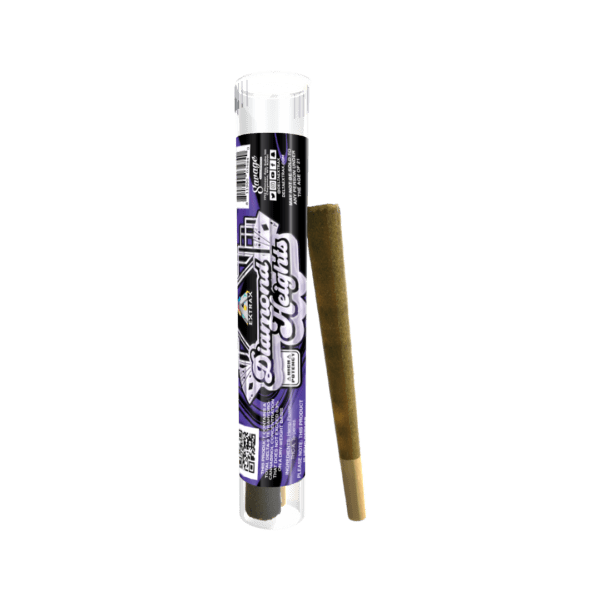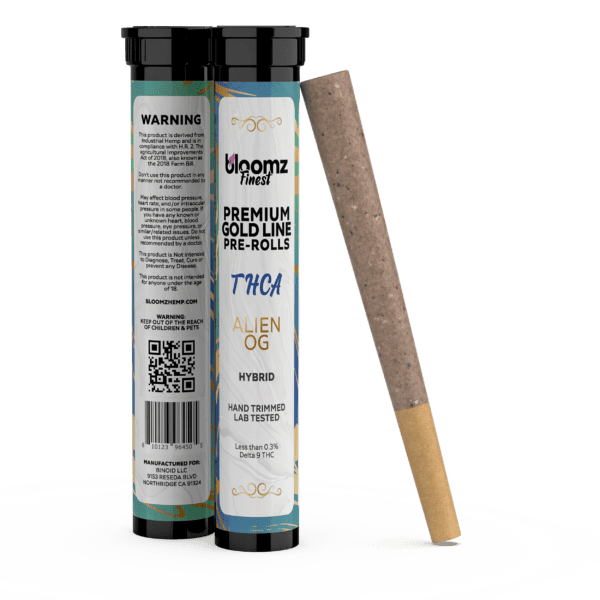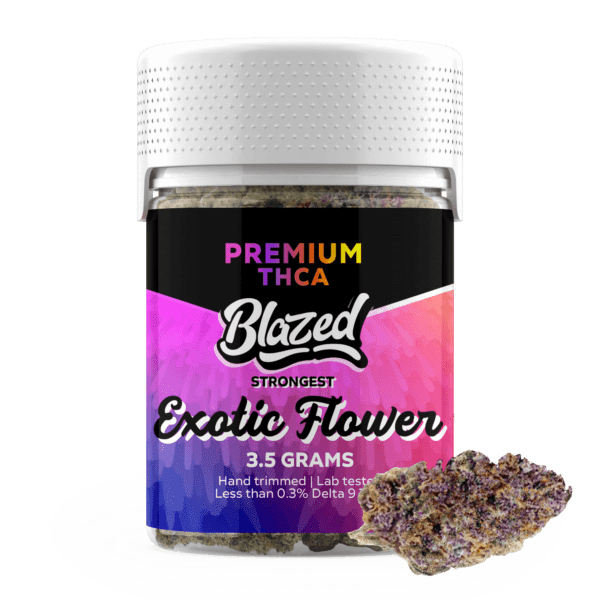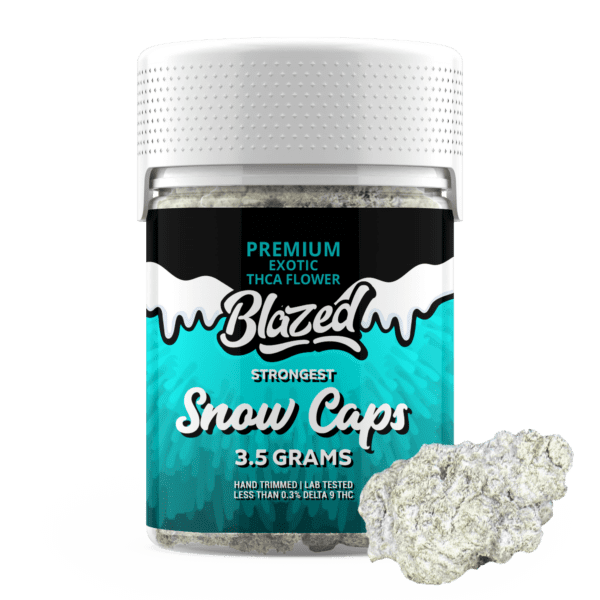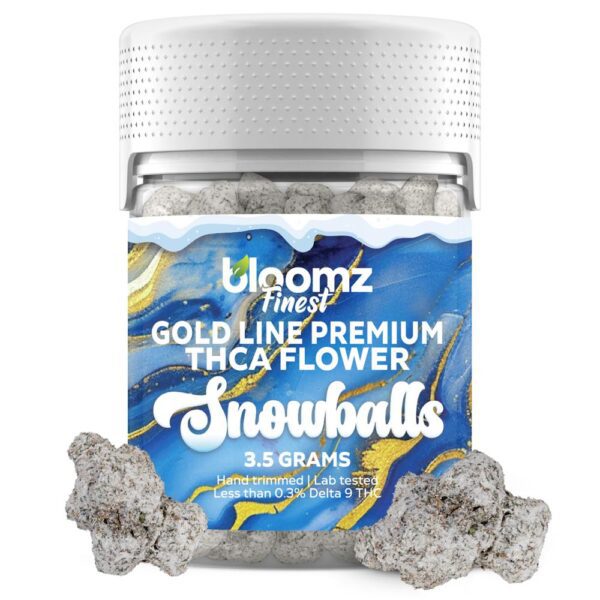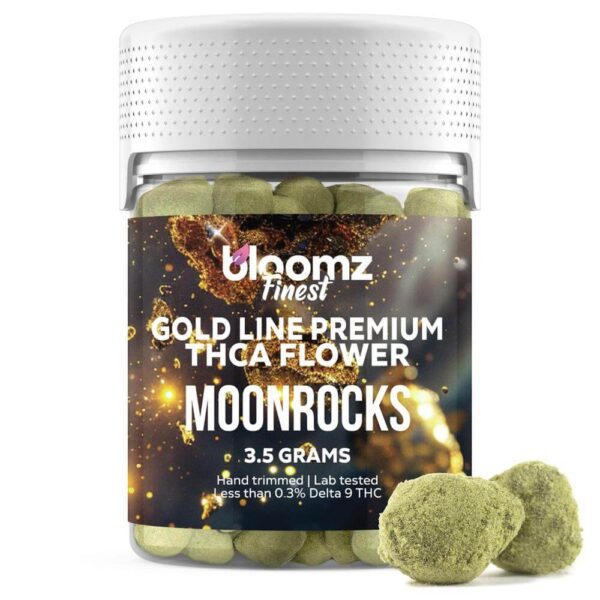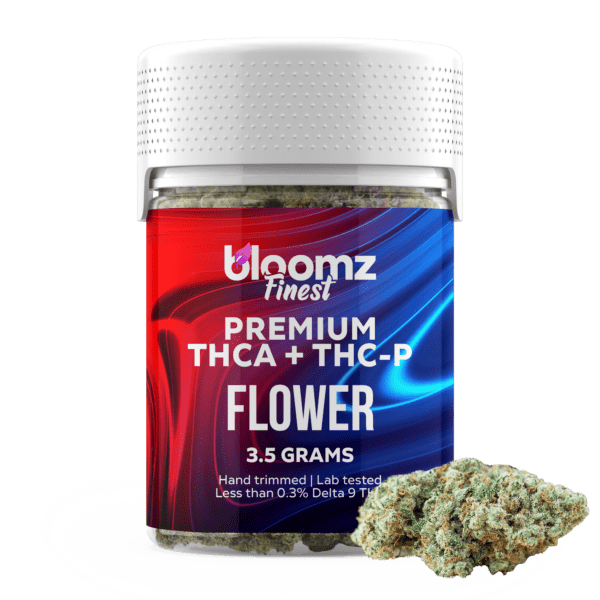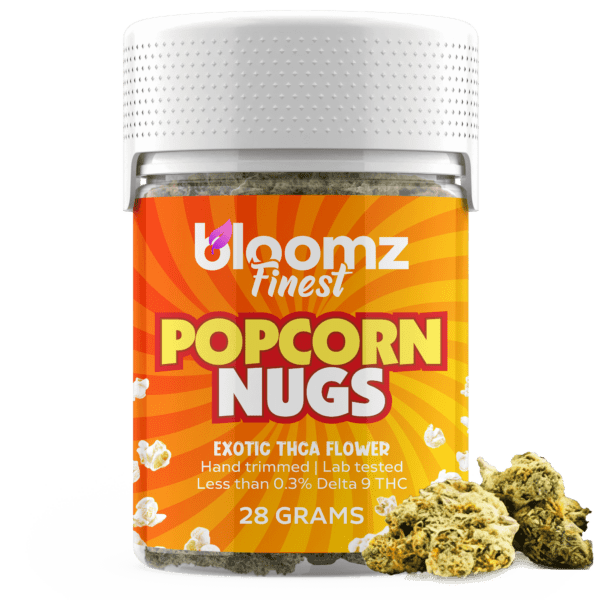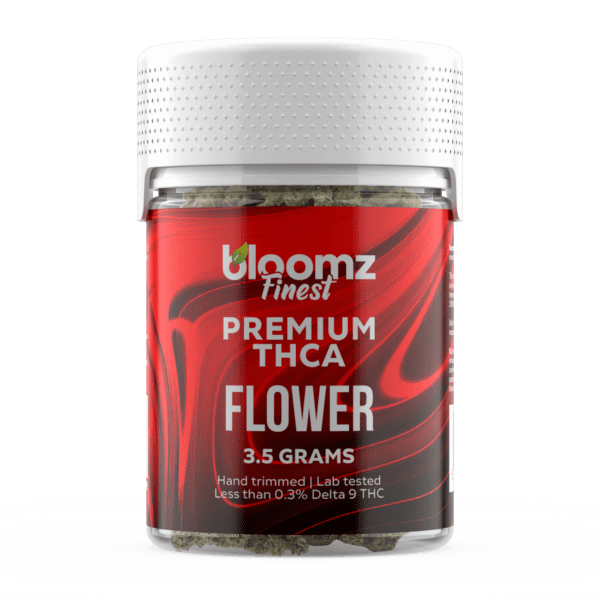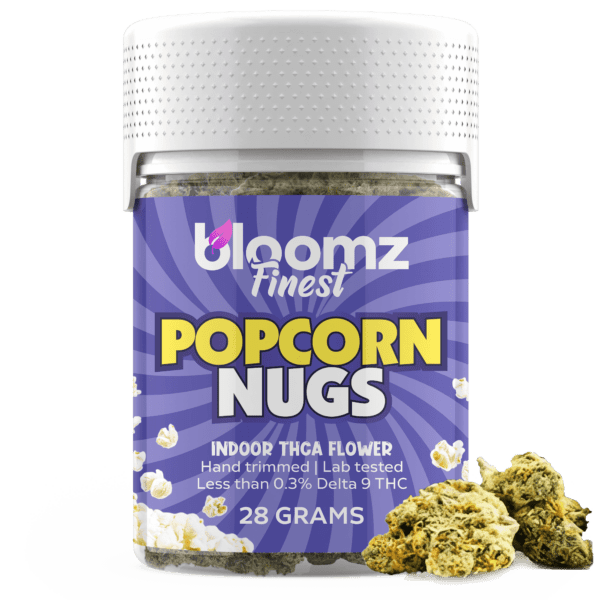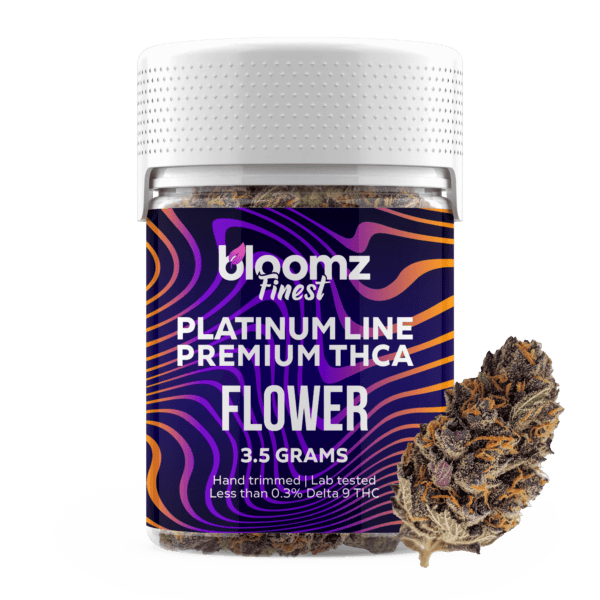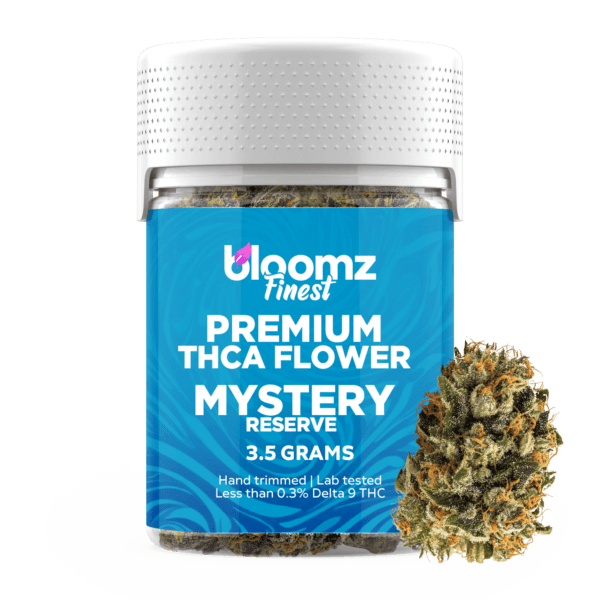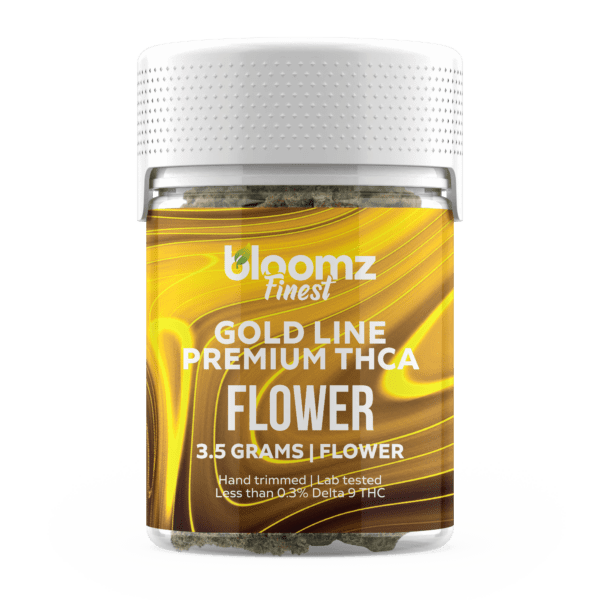The journey toward personal well-being is a rich tapestry woven from countless threads of natural origin, each offering a unique color, texture, and strength. In the modern era, this tapestry has become more intricate than ever, blending ancient patterns with threads of dazzling scientific innovation.
On one side, we have the timeless tradition of wellness herbs, a global garden of botanicals that have been the bedrock of human health for millennia, offering balance through their gentle complexity. On the other side, a new and fascinating thread has appeared: HHC flower, a product born from sophisticated cannabinoid chemistry that provides a uniquely stable and distinct psychoactive experience.
Placing these two options in conversation with one another is to explore the dynamic interplay between the deeply rooted and the newly discovered. It is an investigation into two fundamentally different approaches to botanical wellness, each with its own story, its own character, and its own unique promise for the modern seeker.
To Buy HHC Flower Click Here
Recommended products
Why It’s Important to Breakdown the Matchup of HHC Flower vs. Herbs for Medicinal and Wellness
In the rapidly evolving landscape of hemp-derived products, clarity and education are the cornerstones of safe exploration. A detailed breakdown of HHC flower versus traditional herbs is a crucial endeavor, primarily because it addresses the growing array of semi-synthetic cannabinoids entering the market. HHC, or Hexahydrocannabinol, is not simply a naturally occurring compound concentrated from the plant; it is the result of a significant laboratory process called hydrogenation.
By juxtaposing this modern chemical creation with the ancient, holistic tradition of herbalism, we provide essential context for consumers. This comparison highlights the profound differences in origin, safety profiles, and the very philosophy of use, empowering individuals to make choices that are not just enjoyable but also deeply informed and aligned with their personal comfort levels with scientific intervention in natural products.
Furthermore, a thorough analysis is vital for untangling the complex and often confusing legal status of novel cannabinoids. While traditional herbs operate within a relatively straightforward regulatory framework, HHC occupies a unique and contested legal space. Its advocates argue that because it is not technically a “THC” molecule, it may fall outside of certain restrictive laws
. A detailed matchup allows us to explore these nuances, contrasting HHC‘s precarious legal standing under the 2018 Farm Bill with the broad and stable legality of herbs like chamomile or ginger. This legal clarity is not a trivial matter; it is fundamental to a consumer’s ability to navigate the market safely and responsibly, avoiding potential legal pitfalls while understanding the true nature of the products they are considering.
This breakdown also serves the critical purpose of managing experiential expectations. The effects of HHC flower are psychoactive, offering a distinct journey into euphoria and altered perception that is often compared to a milder, more energetic version of Delta 9 THC. This is an acute, powerful experience designed for recreational or deep relaxation purposes. In stark contrast, the world of herbs offers subtle, non-intoxicating support that works cumulatively over time to foster balance and resilience.
Presenting these two options without a clear delineation of their experiential profiles would be profoundly misleading. A direct comparison ensures that a person seeking gentle, daily wellness support does not mistakenly turn to a potent psychoactive substance, and vice-versa, thereby ensuring the chosen path aligns with the intended destination.
Finally, this comparative analysis fosters a more sophisticated conversation about safety and regulation. The production of HHC involves chemical processes that, if not performed with the utmost precision and care, could potentially leave behind unwanted residues. This stands in stark contrast to the simple drying, grinding, or steeping processes used for most herbs.
By highlighting these differences in manufacturing, we underscore the importance of third-party lab testing and brand reputation in the unregulated cannabinoid market. This empowers consumers to become more discerning, demanding a higher standard of transparency and safety for novel products while appreciating the inherent simplicity and long history of safe use associated with traditional herbs.
Contender #1: HHC Flower
Emerging from the innovative and ever-curious world of cannabinoid science, our first contender, HHC flower, offers a unique and compelling proposition. Hexahydrocannabinol, or HHC, has carved out a distinct niche for itself in the hemp market, celebrated for its remarkable chemical stability and its smooth, uplifting effects that many users place somewhere between the gentle calm of Delta 8 and the iconic potency of Delta 9 THC.
HHC flower is not a product of simple agriculture but a testament to the power of chemistry to modify and enhance nature’s offerings. It represents a different kind of cannabinoid journey, one that is often described as clear-headed, energetic, and joyous, making it a favorite among those who seek a functional yet distinctly euphoric experience. Its appeal lies in this unique balance and its reputation as a resilient and long-lasting compound.
Hexahydrocannabinol (HHC) is a semi-synthetic cannabinoid that is created through a process called hydrogenation. To understand this, it’s helpful to start with its natural counterpart, THC. HHC is essentially a hydrogenated form of THC. The process is chemically analogous to how liquid vegetable oil is converted into solid or semi-solid margarine. In a laboratory setting, a THC molecule has its double bond in the top ring structure broken and saturated with hydrogen atoms, typically in the presence of a metal catalyst like palladium or nickel. This seemingly simple addition of hydrogen makes the molecule significantly more stable. It becomes less susceptible to oxidation and degradation from exposure to heat, air, and UV light, which is why HHC products are known for having a much longer and more stable shelf life than products made with THC.
This chemical robustness is one of its primary advantages. It’s also important to note that the manufacturing process creates a mixture of two different HHC molecules: 9R HHC, which actively binds to the body’s endocannabinoid receptors, and 9S HHC, which, due to a slight difference in its molecular structure, does not bind as effectively and is considered largely inactive. The ratio of these two isomers in the final product directly impacts its overall potency.
With this crucial scientific context, it becomes clear that “HHC flower” isn’t a strain of cannabis that a farmer can cultivate to be naturally rich in HHC but instead, it’s a manufactured, composite, and infused product. The process begins with high-quality, legally grown hemp flower, which is naturally rich in CBD (cannabidiol) and contains less than 0.3% Delta 9 THC. This beautiful, terpene-rich flower provides the physical structure, the aromatic compounds that create the flavor and smell, and a host of other minor cannabinoids. This foundational hemp flower then serves as the base which is meticulously infused or coated with a pure HHC distillate, the potent, honey-like oil created through the hydrogenation process.
This infusion process is what elevates the simple, non-intoxicating hemp flower into a potent, psychoactive product, delivering the unique and sought-after effects of HHC in a familiar, smokeable format. The quality and safety of the final product are therefore entirely dependent on two separate but equally important factors: the premium quality of the initial hemp flower and the verified purity of the HHC distillate with which it is infused.
Recommended products
The creation of a high-quality and effective HHC flower is a multi-stage process that requires a perfect marriage of expert agricultural practices and precise, high-level laboratory techniques. Each and every step in this complex chain of production is critically important to producing a final product that is safe, potent, consistent, and enjoyable for the end consumer:
Hemp Flower Cultivation: The process starts on the farm with the cultivation of high-quality, legally compliant hemp. These plants are grown to be rich in CBD or CBG and to have a low Delta 9 THC content (below 0.3%). The flower is then carefully harvested, professionally trimmed, and slow-cured to optimize its natural aroma, flavor, and appearance.
Cannabinoid Extraction and Isolation: Next, a cannabinoid is extracted from hemp biomass to serve as the precursor for the HHC. While THC can be hydrogenated directly, the more common and federally compliant method is to start with CBD isolate extracted from vast amounts of hemp.
Hydrogenation Process: In a controlled laboratory environment, the precursor cannabinoid is subjected to the hydrogenation process. It is exposed to hydrogen gas at high pressure with a catalyst, which saturates the molecule with hydrogen atoms and converts it into HHC. This process creates the thick, viscous oil known as HHC distillate.
Distillate Infusion: The finished HHC distillate is then evenly applied to the cured hemp flower. To ensure a consistent product, the thick distillate is often gently heated to improve its viscosity and then lightly sprayed or tumbled with the buds. Other methods involve freezing the distillate into a powder and dusting it over the flower.
Quality Control and Lab Testing: The final and most crucial step is comprehensive testing. A sample from the finished batch is sent to an independent, third-party laboratory. This lab verifies the potency of HHC and confirms the absence of any residual solvents, heavy metals, or other contaminants from the manufacturing process. Reputable brands always make these lab reports, or Certificates of Analysis (COAs), readily available to their customers.
The market for HHC flower has grown to include a variety of product types, primarily distinguished by the quality of the base hemp flower and the potency of the HHC infusion. These categories provide consumers with a range of choices to suit their budget and preferences, from affordable small buds perfect for personal rolling to extravagant, ultra-potent moonrocks designed for a truly special occasion. The quality of the experience is always a function of two components: the aromatic, flavorful foundation of the hemp flower and the clean, potent HHC distillate that coats it. This diverse product lineup ensures that there is an HHC flower option for nearly every type of cannabis flower enthusiast:
Indoor HHC Flower: This is the premium tier, utilizing top-shelf, indoor-grown CBD or CBG flower as the base. Indoor cultivation allows for precise control over the growing environment, resulting in a visually perfect, dense, and highly aromatic flower. When infused with HHC, it creates a connoisseur-grade product that offers a superior smoking or vaping experience with exceptional flavor.
Outdoor HHC Flower: This category uses sun-grown hemp flower, which is often more affordable. While sometimes less cosmetically perfect than indoor flower, well-grown outdoor hemp can have a very rich and complex terpene profile. Outdoor HHC flower provides a fantastic value, delivering the same potent effects in a more rustic and cost-effective package.
HHC Small Buds: Often called “smalls” or “popcorn,” these are the smaller-sized buds from the hemp harvest. They are chemically identical to the larger nugs but are separated out due to their size. HHC smalls are then infused with distillate and sold at a lower price, making them a very popular choice for consumers who plan to grind their flower and value savings over bag appeal.
HHC Moonrocks: For those seeking an exceptionally potent experience, HHC moonrocks are the ultimate choice. This product is a triple-layered powerhouse: a nug of high-quality hemp flower is first coated in sticky HHC distillate and then rolled in a thick layer of potent kief (sifted hemp trichomes). The result is a dense, slow-burning product with a very high concentration of cannabinoids, intended for experienced users only.
HHC Pre-Rolls, Blunts & Joints: Offering maximum convenience, pre-rolls eliminate the need for grinding, packing, or rolling. These are ready-to-smoke joints or blunts filled with ground HHC flower. They are perfect for social settings, for trying HHC for the first time without buying a large quantity, or for users who simply prefer a hassle-free experience.
When selecting an HHC flower product, the strain name—typically classified as Indica, Sativa, or Hybrid—plays a significant role in shaping the expected experience. It’s vital to remember that this strain designation refers to the genetics and terpene profile of the base hemp flower before the HHC distillate is added. Terpenes are the aromatic compounds that produce the distinct scents and flavors of different cannabis varieties, from the earthy notes of myrcene to the citrusy aroma of limonene. Many believe that these terpenes work in synergy with cannabinoids to modulate and refine the overall effects, a concept known as the entourage effect.
Therefore, the complete HHC flower experience is a blend of the core psychoactive effects of the HHC itself, guided and colored by the unique character of the underlying hemp strain:
Indica: An HHC Flower product that uses an Indica hemp strain as its base is designed to deliver a profoundly relaxing and body-focused experience. Indica strains are often associated with calming, “chilled out” effects and are rich in terpenes like myrcene. The combination of HHC’s potent euphoria with an Indica profile is ideal for evening use, helping the user to unwind, decompress, and sink into a state of deep physical comfort.
Sativa: When a Sativa hemp strain is used as the foundation, the resulting HHC flower is intended to be more uplifting and cerebrally stimulating. Sativa strains are known for their energizing and creativity-boosting qualities, often containing terpenes like limonene and pinene. Paired with HHC, a Sativa profile can produce a vibrant, euphoric high that is perfect for daytime activities, social engagement, or diving into a creative project.
Hybrid: Created by crossbreeding Indicas and Sativas, and they represent the most diverse category on the market. An HHC flower made with a Hybrid hemp strain aims to provide a balanced, “best of both worlds” experience. Depending on the specific genetics, a Hybrid can be Indica-dominant for relaxation with a mental lift, Sativa-dominant for energy with a pleasant body buzz, or a true 50/50 split for a versatile effect suitable for any time of day.
The legality of HHC flower in the United States is a nuanced and contentious issue, existing in a similar legal gray area to other novel hemp-derived cannabinoids. The legal foundation for HHC products is the 2018 Farm Bill, which federally legalized hemp and all of its derivatives, provided the final product contains less than 0.3% Delta 9 THC. Since HHC is a distinct cannabinoid and is derived from hemp-based precursors like CBD, proponents argue that it is a federally legal hemp derivative. This interpretation has allowed for a national market to flourish. However, this stance is not without its challenges.
The U.S. Drug Enforcement Administration (DEA) has suggested that any “synthetically derived tetrahydrocannabinols” are illegal controlled substances. Because HHC is created through a chemical process (hydrogenation), it could be argued that it falls under this “synthetic” classification. This ambiguity has led many individual states to create their own laws, with some explicitly banning HHC while others have no specific regulations. Consumers must remain diligent and informed about the specific laws governing HHC in their own state and local jurisdiction.
As a product designed to be smoked or vaped, HHC flower can be enjoyed through all the familiar and time-honored consumption methods. The primary goal of each method is to heat the flower, which aerosolizes the infused HHC distillate and the native terpenes, allowing them to be inhaled and absorbed quickly into the bloodstream for a rapid onset of effects.
Recommended products
The method of consumption can subtly influence the flavor and character of the experience. Because HHC flower is an infused product, it’s important to source it from a quality manufacturer to ensure the distillate is applied evenly for a consistent burn and a smooth draw. From the classic ritual of rolling a joint to the clean technology of a dry herb vaporizer, users have a full spectrum of options to choose from:
Vaping (using a portable or desktop vaporizer): Vaping is an excellent method for consuming HHC flower as it offers enhanced flavor and a smoother experience. A dry herb vaporizer heats the flower to a precise temperature, creating a flavorful vapor without the harshness of smoke from combustion. This method is particularly good at preserving the delicate terpene profile of the base hemp flower, allowing the user to fully appreciate its unique aroma and taste.
Smoking: This is the most traditional and direct method, involving the combustion of the HHC flower in a pipe, bong, joint, or blunt. Smoking provides a very fast onset of effects, typically within minutes, which many users prefer. The ritual of grinding the flower and packing a bowl or rolling a joint is a deeply ingrained and enjoyable part of the cannabis experience for many enthusiasts.
Cooking/Baking: HHC flower can be used to make edibles, but it requires an infusion step first. The flower should be ground and then gently heated in an oven (a process called decarboxylation) before being steeped in a fat like butter or oil. This HHC-infused fat can then be used in any recipe. Edibles produce a much more potent and longer-lasting effect with a delayed onset, as the HHC is processed by the liver. This method should be approached with caution, starting with a very small dose
The overall effects of HHC flower are consistently described as a pleasant and unique psychoactive experience. Most users place its potency somewhere between Delta 8 THC and Delta 9 THC, making it a “sweet spot” for many. It is known for producing a significant sense of euphoria and an uplifting, happy mood, but often without the mental fogginess or potential for paranoia that can sometimes accompany high doses of Delta 9 THC.
Many describe the experience as more energetic and clear-headed, a “Sativa-like” high regardless of the underlying strain, which makes it very functional for daytime activities and social situations. On the physical side, it provides a noticeable body relaxation and a sense of comfort that is present but not typically overwhelming or sedating. This balanced profile of cerebral bliss and gentle physical ease has made HHC a highly sought-after cannabinoid for those looking for a joyful and manageable high.
Pros & Cons
Like every botanical and chemical compound, HHC flower presents a unique profile of potential benefits and notable drawbacks. A thorough and honest evaluation of these pros and cons is essential for anyone considering this novel cannabinoid. This balanced perspective allows individuals to move beyond the hype and make an informed decision based on the practical realities of HHC’s stability, effects, and the unregulated nature of the market it inhabits.
Pros:
A primary advantage of HHC is its superior chemical stability. Due to the hydrogenation process, the HHC molecule is highly resistant to degradation from oxidation, heat, and UV light. This means HHC products have a significantly longer shelf life than products made with THC and are less likely to lose their potency over time, providing better value and consistency.
The effects of HHC are often described as a perfect “middle ground” in terms of potency. It is generally considered to be more potent and euphoric than Delta 8, but gentler and less likely to induce paranoia than Delta 9 THC. This balanced profile makes it an ideal choice for users who find Delta 8 too mild but Delta 9 too intense.
Many users report that the HHC experience is uniquely uplifting and clear-headed. It is often associated with a more energetic and motivating high, promoting feelings of happiness and creativity without the heavy sedation or mental fog that can occur with other cannabinoids. This makes it particularly well-suited for social gatherings, creative pursuits, or daytime use.
Due to its federal legality under the 2018 Farm Bill, HHC flower is widely accessible in many parts of the U.S. where state-level cannabis programs do not exist. This allows individuals in those areas to legally purchase and enjoy a psychoactive cannabinoid product from online stores and local shops, expanding access for many adults.
There is a significant amount of anecdotal evidence suggesting that HHC may not be metabolized in the same way as THC, and therefore, may be less likely to be detected on a standard drug test. While this is not scientifically proven and should not be relied upon, it is a widely discussed potential benefit that attracts many users who are subject to routine drug screening. Extreme caution is still advised.
HHC flower allows users to enjoy the traditional and cherished ritual of consuming cannabis flower. The tactile experience of grinding the buds, the rich aroma of the terpenes, and the act of smoking or vaping are important parts of the experience for many enthusiasts. HHC flower provides this authentic experience with a novel cannabinoid.
The use of high-quality hemp flower as a base means that HHC flower contains a rich profile of terpenes and other minor cannabinoids. This contributes to a more complex and nuanced experience, often referred to as an entourage effect, which is more robust and enjoyable than consuming an HHC isolate on its own. The flavor and aroma greatly enhance the overall session.
The HHC market is diverse, offering a wide selection of products based on Indica, Sativa, and Hybrid hemp strains. This variety allows consumers to choose a product with a terpene profile that can help steer the effects toward their desired outcome, whether that is relaxation, stimulation, or a balanced combination of both.
HHC is known for providing a smooth and pleasant physical sensation. Users often report a gentle wave of bodily relaxation and comfort that complements the cerebral euphoria without being overpowering. This makes for a well-rounded experience that addresses both mind and body.
The competitive nature of the novel cannabinoid market has led reputable HHC brands to prioritize transparency. It is now standard for trustworthy companies to provide comprehensive, third-party Certificates of Analysis (COAs) that verify the potency and purity of their products, giving consumers peace of mind.
Cons:
The most significant drawback of HHC is the general lack of scientific research on its effects, particularly regarding long-term safety. As a relatively new addition to the consumer market, its full impact on human health is not well understood, and users are venturing into largely uncharted territory.
The process of creating HHC via hydrogenation requires the use of heavy metal catalysts and chemical solvents. If the final product is not purified with extreme care and precision, there is a risk that these harmful residues could remain. The unregulated nature of the market makes it crucial for consumers to meticulously vet lab reports to ensure product safety.
While HHC’s legal status is arguably stronger than that of THC isomers, it remains in a precarious legal gray area. Its status could change rapidly due to new federal regulations or state-level bans on “synthetically derived cannabinoids,” creating a risky and unstable market for both sellers and consumers.
The potency of HHC products can be inconsistent due to the unregulated production process and the varying ratios of active (9R) to inactive (9S) molecules. A consumer might find that the effects of HHC flower can differ significantly from batch to batch or brand to brand, making it difficult to achieve a consistent and predictable experience.
Recommended products
-
THC-P HashHole Pre-Rolls – Cookies
$19.99$24.99 -
THCA Pre-Rolls with THCA Diamonds – Cookies
$17.99$21.90 -
THCA Pre-Rolls | Diamond Heights – Extrax
$17.99$23.99 -
Exotic THCA Pre-Rolls Gold Line – 3-Pack/6 Pack
$36.99$69.99
Contender #2: Herbs
Our second contender is not a single entity but a vast and venerable library of botanical knowledge, representing thousands of years of human experience with the natural world. Traditional herbs, in the context of wellness, are a global collection of plants whose roots, bark, leaves, flowers, and seeds have been used across countless cultures to support health and encourage a state of holistic balance. This is the enduring world of chamomile, ginseng, lavender, and turmeric—names that evoke a sense of grounding, tradition, and gentle, nurturing care.
Unlike the targeted, intense effect of a single semi-synthetic cannabinoid, the philosophy of herbalism is synergistic and multifaceted, relying on the complex interplay of a plant’s many natural compounds. Their timeless appeal is found in their deep historical roots, their incredible versatility in application, and their alignment with wellness paradigms that favor gradual, sustainable harmony over immediate, powerful alteration.
In the intricate lexicon of wellness, “herbs” are defined as plants or specific parts of plants that are valued and utilized for their aromatic, savory, or, most significantly, their therapeutic properties. This utilization is fundamentally rooted in the profound understanding that plants, in their own struggle for survival and procreation, synthesize an incredibly wide variety of chemical compounds for growth, defense against predators, and adaptation to their environment.
A great many of these compounds can have fascinating and beneficial effects on human physiology when consumed. These active constituents are categorized into complex classes, including alkaloids, which are nitrogen-containing compounds that can have powerful effects; flavonoids, which often contribute to plant pigmentation and have antioxidant properties; terpenes, the aromatic compounds responsible for the distinct scents of plants like pine and lavender; glycosides, phenols, and many more.
The philosophy undergirding herbalism is inherently holistic, viewing the plant as a complete, synergistic entity whose combined compounds work together more effectively and with greater balance than any single isolated component—a principle that mirrors the “entourage effect” concept found in cannabis. The application of these herbs is not typically intended to produce a single, potent, acute effect, but rather to provide gentle, cumulative support, helping to nourish and fortify bodily systems while promoting a state of equilibrium and resilience over extended periods of time.
The history of using herbs for wellness is inextricably linked with the history of humanity itself. Our earliest ancestors were hunter-gatherers whose survival depended on an intimate knowledge of the plant kingdom. This empirical knowledge, passed down through generations, formed the basis of the first systems of medicine. As civilizations arose, this wisdom was recorded and refined. Ancient Egyptian medical texts, such as the Smith Papyrus, detail the use of medicinal plants. In India, the ancient system of Ayurveda developed a highly sophisticated pharmacopeia of thousands of herbs to balance the body’s elemental energies, a practice documented in texts that are still studied today.
In China, the principles of Traditional Chinese Medicine (TCM) were established, using intricate herbal formulas to harmonize the flow of vital energy, or Qi. The foundations of Western herbalism were laid by the ancient Greeks and Romans like Dioscorides, whose work became the authoritative medical text in Europe for over 1,500 years. This rich herbal knowledge was the sole form of medicine for most of human history and provided the original templates for many of our most important modern pharmaceutical drugs.
While the global apothecary contains tens of thousands of herbs, a select group has achieved worldwide recognition for their long history of use, their gentle nature, and the growing body of scientific research that supports their traditional applications. These herbs serve as excellent introductions to the world of botanical wellness:
Ashwagandha (Withania somnifera): As a cornerstone of Ayurvedic medicine, ashwagandha is a celebrated adaptogen, a class of herbs believed to enhance the body’s resilience to life’s daily challenges. The root of this small shrub is used to promote a sense of calm, support restful sleep, and encourage overall vitality. Its active compounds, withanolides, are thought to help balance the body’s physiological responses, fostering a state of equilibrium.
Chamomile (Matricaria recutita): These small, daisy-like flowers are perhaps the most famous relaxing herb in the Western world. For centuries, a warm cup of chamomile tea has been a beloved ritual to unwind and prepare for a peaceful night’s sleep. Its gentle, calming effects are largely attributed to a flavonoid called apigenin, which helps to soothe the nervous system and promote a sense of tranquility.
Lavender (Lavandula angustifolia): Known for its stunning purple flowers and an aroma that is synonymous with relaxation, lavender is a giant in the world of aromatherapy. Its scent, rich in the terpenes linalool and linalyl acetate, has been shown to create a serene and calming atmosphere. While often used externally as an essential oil, its flowers can also be used in teas and foods to impart a sense of peaceful well-being.
Ginger (Zingiber officinale): This pungent, spicy rhizome is a staple in both kitchens and traditional apothecaries around the world. Ginger is renowned for its warming properties and its ability to support healthy digestion and soothe an upset stomach. Its main active compound, gingerol, is a potent antioxidant and is responsible for its characteristic fiery flavor.
Mint (Mentha species, especially Peppermint): The refreshing and cooling sensation of peppermint makes it an instantly recognizable and beloved herb. Traditionally used to support both respiratory health and digestive comfort, its active compound, menthol, provides its signature crisp aroma and soothing properties. A cup of peppermint tea is a classic and effective way to freshen the senses and calm the digestive system after a meal.
Ginseng (Panax species): Considered a precious “king” of herbs in Traditional Chinese Medicine, the gingseng root is a powerful adaptogen used to support energy, stamina, and mental clarity. It is a slow-growing plant whose active compounds, ginsenosides, are believed to bolster the body’s vitality and life force (Qi). It is often used to combat feelings of fatigue and support cognitive performance.
Turmeric (Curcuma longa): The brilliant golden-orange rhizome of the turmeric plant is a culinary spice and a revered Ayurvedic herb. Its primary active ingredient, curcumin, is a powerful antioxidant that has been extensively studied for its ability to support a healthy inflammatory response in the body. To enhance its benefits, it is often consumed with black pepper, which contains piperine to increase absorption.
Ginkgo (Ginkgo biloba): The unique, fan-shaped leaves of the ancient ginkgo tree have been used for centuries in TCM to support brain health and circulation. Ginkgo is most famously associated with supporting cognitive functions like memory and focus. It is rich in unique compounds, including flavonoids and terpenoids, that are believed to help promote healthy blood flow, particularly to the brain.
The enduring relevance of herbs is due in large part to their incredible versatility. They can be prepared and integrated into one’s life in a multitude of forms, ensuring that there is a suitable method for every lifestyle, preference, and tradition. This adaptability allows the wisdom of herbalism to thrive in the modern world, from simple, ancient preparations to sophisticated contemporary products:
Powders: Dried herbs can be finely milled into powders, which are perfect for blending into smoothies, stirring into yogurt or oatmeal, or adding to recipes. This method allows for the consumption of the whole herb and offers easy, customizable dosing.
Edibles: The wellness industry has embraced functional foods, creating products like herbal gummies, infused chocolates, and snack bars. This makes taking herbs a delicious and convenient treat rather than a chore.
Tinctures: Tinctures are concentrated liquid extracts that offer potency and a long shelf life. A few drops of a tincture under the tongue or in a beverage can provide a rapid and precisely measured dose of the herb’s active compounds.
Capsules: For those who want maximum convenience and wish to avoid the often-strong taste of many herbs, capsules are the perfect solution. They provide a tasteless, pre-measured, and consistent dose every time.
Beverages: Brewing herbal tea is the most traditional and ritualistic method of consumption. The simple act of steeping herbs in hot water is a calming practice in itself. The modern market has also exploded with ready-to-drink herbal teas, tonics, and sparkling botanical waters.
Dietary Supplements: This broad category includes tablets and softgels that usually contain a standardized herbal extract, which is formulated to deliver a specific and guaranteed amount of a key active compound.
Pre-Workout Products: Many natural pre-workout supplements now use stimulating and adaptogenic herbs like rhodiola and ginseng to support energy and endurance as an alternative to synthetic ingredients.
A key feature of the modern natural products industry is the creation of synergistic formulas that combine herbs with specific vitamins, minerals, and amino acids. This approach is based on the scientific principle that these ingredients can work together to create an effect that is greater than the sum of its parts. For instance, a formula for joint support might combine the herb boswellia with glucosamine and chondroitin. A blend for mood support might pair the herb St. John’s Wort with B-vitamins and the amino acid 5-HTP. This allows for the creation of sophisticated, multi-action products that address wellness goals from multiple angles.
Another powerful trend in wellness is the combination of traditional herbs with functional mushrooms. Fungi like Reishi, Lion’s Mane, and Cordyceps have their own rich histories of use and contain unique bioactive compounds, such as beta-glucans, that are not found in plants. By blending the botanical and fungal kingdoms, formulators can create potent synergistic products. For example, the adaptogenic herb astragalus could be combined with a blend of immune-supportive mushrooms like Turkey Tail and Chaga. The cognitive-supporting Lion’s Mane mushroom could be paired with the herb ginkgo biloba for a comprehensive brain health formula.
The latest frontier in formulation is the combination of traditional herbs with cannabinoids derived from the hemp plant. This innovative approach unites the ancient wisdom of herbalism with the modern science of the endocannabinoid system (ECS). By pairing herbs with non-intoxicating cannabinoids like CBD, CBG, or CBN, or even compliant amounts of Delta 8 THC, HHC, or Delta 9 THC, formulators can create products with targeted and enhanced effects. For example, a relaxing blend might combine chamomile and lavender with CBD and CBN. A topical for physical comfort might blend the herb arnica with the cannabinoid CBG. This allows for a multi-system approach, where the herbs and cannabinoids work on different but complementary pathways in the body.
The overall effects of herbs are characterized by their gentle, subtle, and cumulative action. Unlike the immediate and powerful psychoactive experience delivered by HHC flower, herbs work quietly in the background to support and nourish the body’s own systems. The goal is not to induce a dramatic shift in consciousness but to foster a state of balance and resilience over time. The benefits of an adaptogen are not felt as a sudden “kick,” but as a gradual realization over weeks that one is feeling more centered and energetic. The effects of a digestive herb like peppermint are a gentle and immediate soothing of the stomach. The herbal path is a marathon, not a sprint, focused on building a strong and resilient foundation for lasting well-being.
Recommended products
-
Exotic THCA Smalls
$179.99$329.99 -
THCA Flower
$27.99$79.99 -
THCA Smalls
$149.99$256.99
Pros & Cons
The ancient and gentle path of herbalism offers a wealth of benefits for those seeking to support their well-being, but it is not without its limitations. A balanced and realistic understanding of its distinct advantages and potential drawbacks is key to successfully incorporating these botanical allies into one’s life. This allows for the setting of proper expectations and ensures that the herbal approach is the right fit for an individual’s specific goals and lifestyle.
Pros:
The non-psychoactive nature of almost all wellness herbs is their most significant advantage. This allows them to be used safely at any time of day without fear of intoxication or impairment. They can be part of a morning routine before work or an evening ritual before bed without disrupting one’s clarity, focus, or ability to function.
Herbs are broadly legal and socially accepted worldwide. Regulated as foods or supplements, they are easily accessible in mainstream stores and online without legal risk or social stigma. This low barrier to entry makes herbalism an incredibly approachable form of natural wellness for nearly everyone.
The sheer biodiversity of the plant kingdom provides an incredible array of herbal options. This allows for a highly personalized approach to wellness, where individuals can choose specific herbs or formulas to support their unique needs, whether for digestion, sleep, energy, or mood.
The effects of herbs are typically gentle and work in harmony with the body’s own homeostatic mechanisms. They act as supportive tonics rather than powerful agents of change, which is ideal for those seeking to build sustainable, long-term health and resilience.
Engaging with herbalism is a way to connect with millennia of human tradition and wisdom. The simple ritual of preparing and drinking herbal tea can be a mindful and grounding practice, adding a layer of historical and cultural richness to one’s wellness routine.
The versatility of herbal preparations is a major pro. With options ranging from teas and tinctures to capsules and gummies, there is a format to suit any preference or lifestyle. This adaptability makes it easy to maintain a consistent herbal regimen.
Many fundamental and effective herbs are quite affordable, especially when purchased as loose, dried botanicals. This makes the foundational aspects of herbal wellness accessible to people from all economic backgrounds, democratizing natural health.
The sensory aspects of herbs—their aromas, tastes, and colors—are a significant part of their benefit. The practice of aromatherapy is based on the mood-lifting effects of plant scents, and the enjoyment of a flavorful herbal tea adds a pleasurable dimension to the experience.
A growing body of scientific research is continually exploring and validating the traditional uses of many herbs. This evidence-based approach gives consumers more confidence in the efficacy and safety of herbal products and deepens our understanding of how they work.
The modern wellness market excels at creating synergistic formulas that combine herbs with other beneficial ingredients like vitamins, mushrooms, and cannabinoids. These sophisticated blends can offer more targeted and comprehensive support than a single herb alone.
Cons:
The dietary supplement industry, which governs most herbal products, is not as strictly regulated as the pharmaceutical industry. This can lead to inconsistencies in product quality, purity, and potency. Consumers must take on the responsibility of researching brands and verifying third-party lab tests.
The gentle, cumulative nature of herbs requires patience and consistency. The benefits are often subtle and may take weeks or even months of daily use to become noticeable. This can be a drawback for those seeking quick and dramatic results.
Even though they are natural, herbs are biochemically active and can cause side effects, allergic reactions, or interact negatively with prescription medications. It is crucial to consult with a healthcare professional before starting an herbal regimen, especially for those with pre-existing health conditions or who are taking other medications.
The flavor of many medicinally potent herbs can be intensely bitter, earthy, or otherwise challenging to the palate. This can be a significant barrier to compliance for some individuals, limiting their options to capsules or other forms that mask the taste.
How to Go About Choosing Which Option
Choosing between the novel psychoactivity of HHC flower and the ancient, grounding tradition of herbs is a decision that rests entirely on personal intention and self-awareness. There is no universal “better” option, only the option that is better suited to your specific goals, lifestyle, and experience level. The fundamental question to ask is what you are seeking: an immediate, perception-altering journey for recreational enjoyment or deep relaxation, or a long-term, subtle partnership for building foundational wellness and resilience? Your answer will illuminate which of these two profoundly different botanical paths is the right one for you to walk at this time.
To clarify this choice, it is helpful to view each contender through the lens of its primary purpose. HHC flower is a tool for acute use, designed to produce a tangible and enjoyable psychoactive effect. It is for moments of intentional recreation and unwinding, offering a distinct shift in mood and perception. Its use requires planning and a responsible setting due to its intoxicating nature, but its effects are felt rapidly and reliably. It is a product for altering one’s state of being in the short term.
Traditional herbs, in contrast, are tools for sustained, long-term wellness. They are non-intoxicating allies designed to be woven into the fabric of daily life. Their benefits are not typically felt as an immediate “effect” but as a gradual improvement in one’s overall sense of balance, energy, and well-being over time. The herbal path is one of consistency, patience, and nourishment, aiming to support the body’s own inherent wisdom rather than fundamentally changing one’s conscious experience.
|
Feature |
HHC Flower |
Traditional Herbs |
|---|---|---|
|
Primary Effect |
Psychoactive, euphoric, uplifting |
Non-psychoactive, balancing |
|
Onset Time |
Very fast (minutes) via inhalation |
Slow & cumulative (days to weeks) |
|
Primary Use Case |
Acute, recreational, mood elevation |
Daily, foundational, long-term support |
|
Cognitive Impact |
Significant impairment, intoxicating |
None, can be used anytime |
|
Legality |
Legally complex and variable by state |
Widely legal and accessible |
|
Safety Profile |
Under-researched, production risks |
Generally safe, long history of use |
|
Product Nature |
Manufactured (hemp flower + distillate) |
Natural (dried/extracted plant matter) |
|
User Experience |
Best for those with cannabinoid experience |
Suitable for all experience levels |
|
Dosing |
Requires caution to find sweet spot |
Easy, flexible, low risk |
|
Best For |
Users seeking a functional, happy high |
Anyone seeking gentle, sustained wellness |
Ultimately, it is important to recognize that these two worlds are not necessarily mutually exclusive within a holistic lifestyle. A person could easily rely on a daily regimen of adaptogenic herbs to build their foundation of well-being, while also choosing to enjoy HHC flower on a weekend for a specific recreational or social purpose. The key is understanding that they are different tools for different jobs. By approaching both with knowledge, respect, and a clear intention, you can harness their unique benefits effectively and safely.
Weaving Your Wellness Narrative
In the grand story of your own health and happiness, you are the author, and every choice you make is a word on the page. The botanical world offers you a rich vocabulary, from the ancient, poetic language of herbs to the modern, scientific slang of novel cannabinoids like HHC. A skillful author knows that the power of a story lies in choosing the right words for the right moment.
There is a time for quiet, descriptive prose and a time for bold, exciting action. By understanding the meaning and impact of each botanical choice, you can write a vibrant, balanced, and compelling narrative of well-being, crafting a life story that is uniquely and beautifully your own.
To Buy HHC Flower Click Here
Recommended products
-
THCA Flower – Platinum Line
$49.99$79.99 -
THCA Flower – Mystery Reserve
$41.99$79.99 -
THCA Flower – Indoor Exotics – Gold Line
$37.99$69.99 -
THCA Smalls
$149.99$256.99

